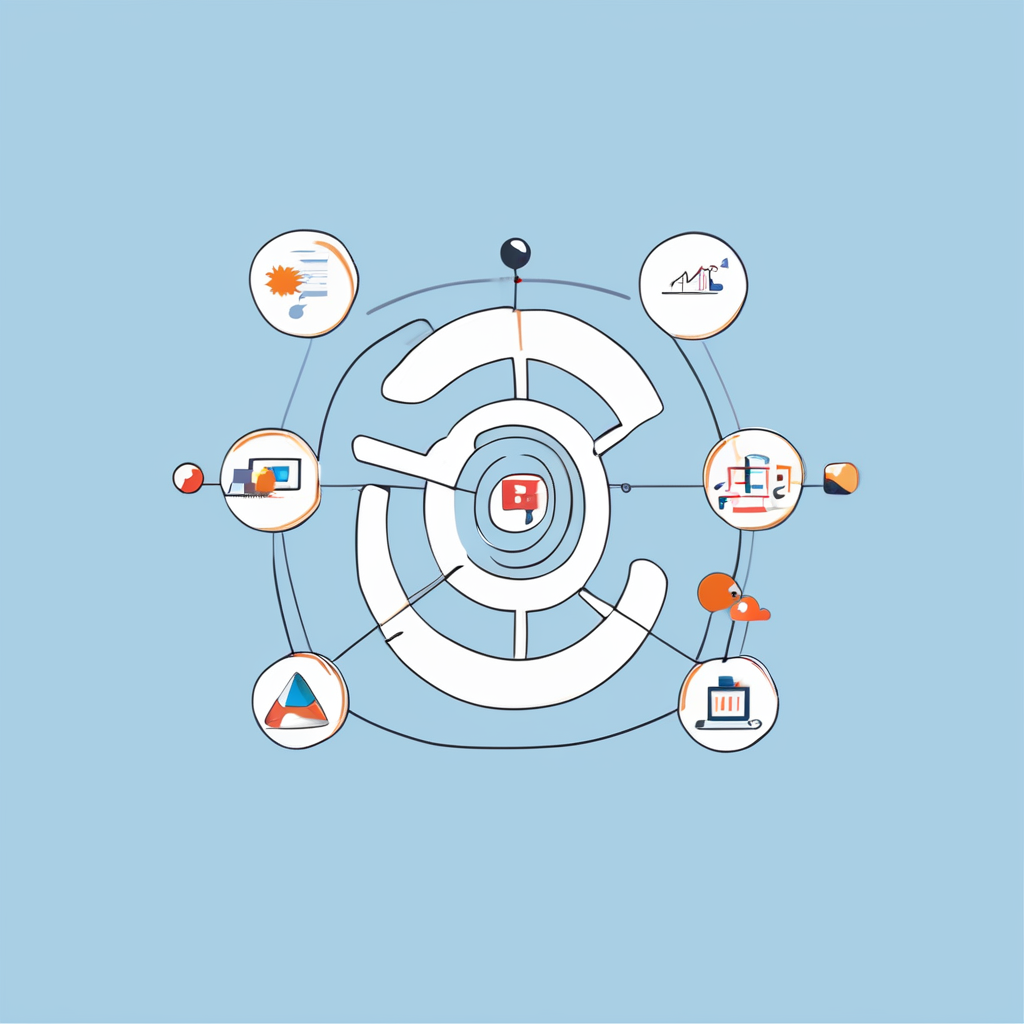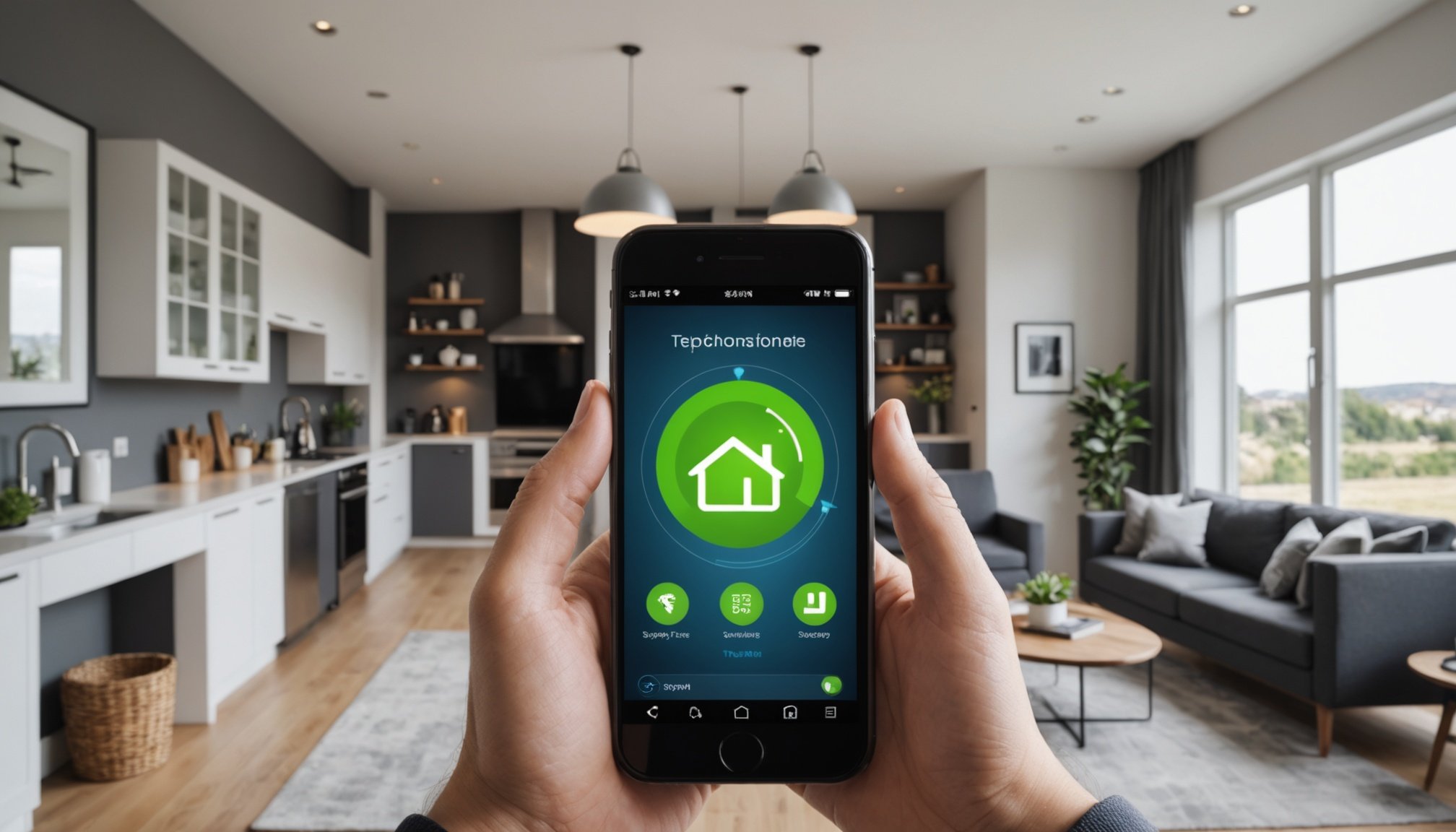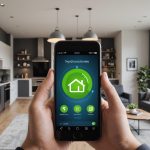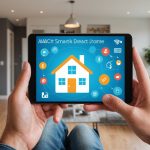Understanding Energy Efficiency in Smart Homes
Energy efficiency is vital for modern living, offering both environmental and economic benefits. In a world increasingly aware of sustainability, reducing energy consumption reduces our carbon footprint and lowers utility bills.
Smart homes are at the forefront of this energy revolution. By integrating intelligent technology, these homes automate and optimise energy use, contributing significantly to energy conservation. For instance, smart thermostats adjust heating and cooling based on your routine, reducing waste.
Additional reading : Maximize your smart home”s energy efficiency: innovative smartphone strategies for monitoring hvac consumption
Smart lighting systems further streamline energy usage by switching off when rooms are unoccupied. These innovations make small, regular adjustments, leading to significant cumulative savings.
Smartphones play a pivotal role in this ecosystem, acting as remote controls for smart devices. With a simple tap, homeowners can control lights, appliances, and thermostats, even when away. This capability ensures energy isn’t consumed unnecessarily, promoting efficiency while maintaining comfort.
Also read : Digital harmony: smart approaches to achieving work-life balance with your smartphone
Moreover, these devices offer insights into energy consumption patterns, empowering users to make informed decisions about their usage. This data-driven approach enhances sustainability, encouraging households to adopt more eco-friendly habits. In conclusion, the synergy between energy efficiency and smart homes positions us closer to a more sustainable future.
Smartphone Applications for Energy Management
Harnessing the power of smartphone technology, energy management apps offer an effective avenue for optimizing energy use. These applications enable users to monitor and automate energy consumption seamlessly.
Popular Energy Monitoring Apps
Several leading apps provide real-time energy tracking, allowing users to gain insights into their consumption patterns. These energy management apps feature tools like detailed analytics charts and alerts that help users identify peak usage times, often resulting in cost-saving opportunities. User feedback typically highlights satisfaction with intuitive dashboards and reliability. Many of these apps maintain high ratings due to their ability to translate complex data into understandable formats, enhancing user engagement.
Home Automation Integration
Incorporating smart home devices, these apps offer significant opportunities for automation. Users can set schedules and rules for devices, ensuring energy is used only when necessary. For example, lights can be programmed to switch off during daylight, reducing wastage. By integrating multiple smart devices, a home can respond dynamically to energy needs, creating an ecosystem where efficiency is maximised without constant human intervention.
Benefits of Remote Monitoring
One of the standout features is the convenience of remote management. Users can adjust their home settings while on-the-go, leading to more proactive consumption behaviour. Alerts and notifications can guide users towards more efficient habits. Case studies often reveal a remarkable drop in energy waste, demonstrating the long-term benefits of these advanced monitoring systems.
Smart Devices Compatible with Smartphones
The rise of smart devices has transformed home automation, providing convenience and energy efficiency. Among these innovations are the smart thermostats and climate control systems tasked with managing household temperatures.
Smart Thermostats and Climate Control
Smart thermostats like the Nest and Ecobee are leading the market. These devices are renowned for their advanced energy-saving capabilities, as they learn and adapt to your lifestyle. Users report significant cost reductions due to features like geofencing and usage history analysis, which optimise heating and cooling.
Smart Lighting Solutions
Smart lighting options, such as Philips Hue and LIFX, have revolutionised energy efficiency by allowing you to control and schedule lighting via smartphones. This innovative method enables creative lighting setups that reduce electricity bills. Users enjoy personalising light schemes to suit their activities and moods.
Smart Plugs and Appliances
Smart plugs offer functionality by optimising and monitoring device usage. Brands like TP-Link provide insights into energy consumption, giving control over large appliances remotely. As users explore these solutions, they find benefits in comparative analyses of popular smart appliances that balance efficiency and cost-effectiveness.
Cost Savings and Environmental Impact
With the rising awareness around environmental sustainability, smart technologies offer significant cost savings that appeal to eco-conscious consumers. By automating and optimising energy use, these systems can reduce overall consumption and, subsequently, electricity bills. Smart thermostats, for instance, can learn a household’s schedule and adjust heating or cooling to operate efficiently only when needed, leading to substantial reductions in energy use.
Beyond monetary savings, the environmental benefits of such reduced consumption are profound. By diminishing reliance on non-renewable energy resources, smart technologies help to lower carbon footprints substantially. This aligns with broader global sustainability goals and fosters a culture of conscious usage of resources, exemplifying a practical approach to tackling climate change on an individual level.
Early adopters of smart home technologies often report noticeable improvements. For instance, households using smart lighting systems observe a decrease in electricity expenses substantially, while also contributing to sustainability efforts by reducing carbon emissions. These real-world impacts not only confirm the potential cost savings and environmental advantages but also promote informed decision-making among consumers considering the adoption of smart technologies. With these systems, people can seamlessly integrate sustainability into their daily lives while reaping financial rewards.
Best Practices for Energy Efficient Smartphone Usage
Implementing energy efficiency strategies in your smartphone usage is both smart and practical. Setting up energy alerts and notifications can be the first step. You can configure these alerts to track energy consumption by accessing your device settings. This proactive approach helps in identifying apps or activities consuming excessive power. For instance, you could receive a notification when your battery life drops below a certain percentage, prompting timely action.
Regular device maintenance and updates are equally crucial. Keeping your smartphone and its apps up-to-date ensures optimal performance and enhances energy efficiency. Regular updates often include performance improvements and energy-saving features. Additionally, periodic maintenance, such as clearing cache and uninstalling unused apps, contributes to sustaining your device’s longevity and energy conservation.
To maximise energy efficiency across your household, it’s valuable to involve family members. Encourage them to adopt energy-saving practices and leverage educational tools to raise awareness. Community efforts, such as creating a group challenge to lower energy consumption, can be highly beneficial. Engaging everyone in this cause not only promotes sustainability but also fosters a collective, eco-friendly mindset.










